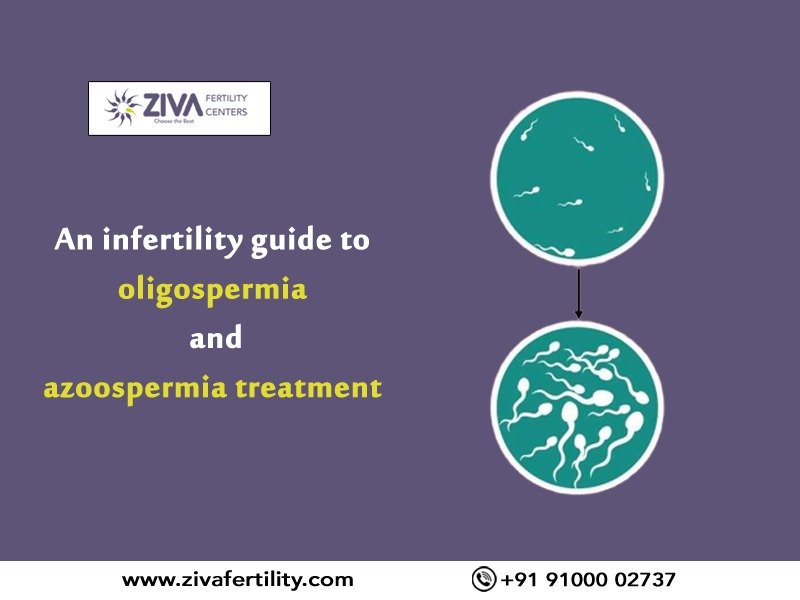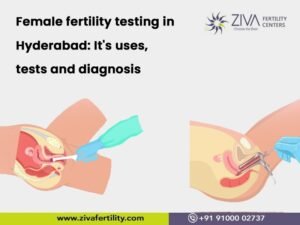Azoospermia is a condition where the lack of any sperm in a man’s semen sample after it has been centrifuged. In order to confirm Azoospermia, at least two semen samples should be examined. This condition is found in only 1% of males, but that means it contributes to 20% of all male infertility cases. In cases of low sperm count, the sperm count after ejaculation is lower than it should be. If in a millilitre of semen, there are less than 15 million sperm, your sperm count is considered poor. A low sperm count may lower pregnancy chances, but the good news is that many men with low sperm counts have been able to conceive children.

What are the reasons for Azoospermia?

Various factors contribute to Azoospermia, such as:
- Epididymitis
- Ejaculatory duct obstruction
- Undescended testes at birth
- Trauma or surgery of the scrotum
- Vasectomy
- Primary testicular failure (Klinefelter syndrome)
- Unexplained genetic infertility
- Secondary testicular failure (Kallman syndrome)
- Pituitary/Hypothalamic tumour
- Hyperprolactinemia; high level of prolactin in males
- Cancer treatments, especially when the male undergoes any type of chemo, radiation, and surgery
- Alcohol and glucocorticoids cause drug-induced pituitary suppression.
- Testosterone supplements
- Congenital adrenal hyperplasia
- Varicocele
- Sickle cell anaemia
- Diabetes mellitus
- Exposure to pesticides/toxins
- Frequent use of hot tubs and saunas
- Sperm autoimmunity
What are the symptoms of Azoospermia?
If everything is fine, then one should be pregnant within six months to one year of trying. But if that does not happen, it may not occur to you that you might have Azoospermia. The below symptoms are something to look out for:
- Low sex drive
- Erectile dysfunction
- Lump, swelling, or discomfort around the testicles
- Reduced facial or body hair
Know about Oligospermia
Oligospermia occurs when the ejaculation contains fewer sperm than what is required for conception. This condition is also referred to as Oligozoospermia. As per World Health Organization (WHO) norms, if the sperm count is less than 20 million per millilitre, then one can be considered as having Oligozoospermia.
What causes Oligospermia?
The following disorders lead to Oligozoospermia:
Varicocele: Varicocele means abnormally dilated veins in the scrotum. Sperm production is hampered by increased testicular temperature caused due to testicular vein dilation. Varicoceles cause impaired fertility, decreased testosterone production by the testis, or scrotal discomfort.
Testosterone is the key male hormone needed to produce sperm, but it hinders testosterone synthesis when the testicular’ temperature increases. High temperatures also harm the sperm’s DNA.
Hormonal imbalance: FSH, LH, and Testosterone are all key hormones for healthy sperm production. Any imbalances in these hormones also lead to Oligozoospermia.
Work environment: If one works with the laptop constantly placed on the lap, it increases the scrotum temperature and disturbs sperm production.
Clothes: The scrotum must be maintained at a certain temperature. If one wears too tight clothes around the genitals, then they get heated up, which is counterproductive for sperm production.
Substance abuse and alcohol: Cocaine and other drugs lead to a reduction in sperm count. Heavy drinkers and chain smokers also have similar consequences in terms of sperm production.
Symptoms of Oligospermia
Please watch out for the below symptoms:
- Low sexual desire
- Difficulties sustaining an erection
- Testicular discomfort, swelling, or a lump
- Hair loss on the face or body or other indications of a chromosomal or hormone problem
Treatments for Azoospermia
Underlying causes for Azoospermia determine the treatment:-
- If there are blockages, they can be surgically corrected. This is a microsurgery for blocked sperm in the vas deferens or another location.
- For cases of hormonal deficiency, the patients can have the necessary hormones administered to them.
- If the cause is undetermined, the couples are encouraged to undergo a suitable ART (Assisted Reproductive Technology) process. The sperm(s) existing in the testes are directly removed by utilising sperm retrieval methods. Through ICSI (IntraCytoplasmic Sperm Injection), the sperm is injected into the female oocyte (egg) in a laboratory.
Any of the following methods can extract the sperm:
- TESE: Testicular sperm extraction
- Micro TESE
- MESA: Microscopic Epididymal Sperm Aspiration
- PESA: Percutaneous Epididymal Sperm Aspiration
- Testicular Biopsy
Treatments for Oligospermia
Even for Oligozoospermia, which is simpler to cure, treatment options vary depending on the underlying reason:
Varicocele: in a microsurgical procedure the spermatic veins that have widened in size due to the condition are fixed.
Infections: infections also Oligospermia arises, which are treated with medication, especially through an antibiotic course.
Hormonal imbalance: hormonal imbalances can be fixed via drugs and hormone replacement therapies.
Having any of these conditions should not deter you from having children. Mediations, surgical options, ART etc, have all evolved well for you to realise your dream. We at ZIVA analyse all aspects of male infertility before giving any treatment. Please visit our website https://zivafertility.com/ or reach us at +91-9100002737, +91-9392834024 and Info@zivafertility.com
















